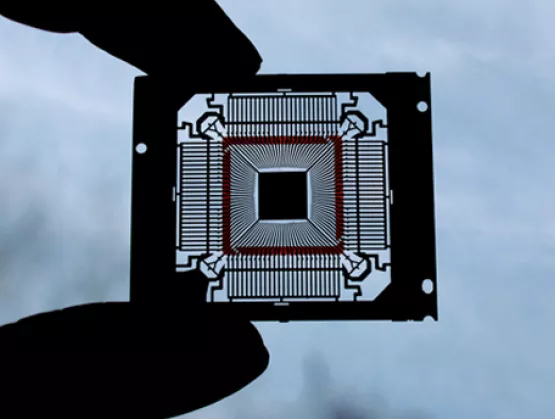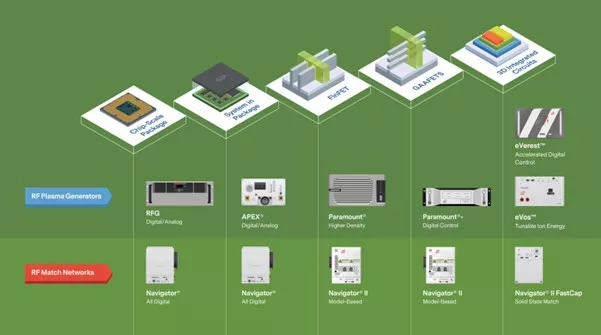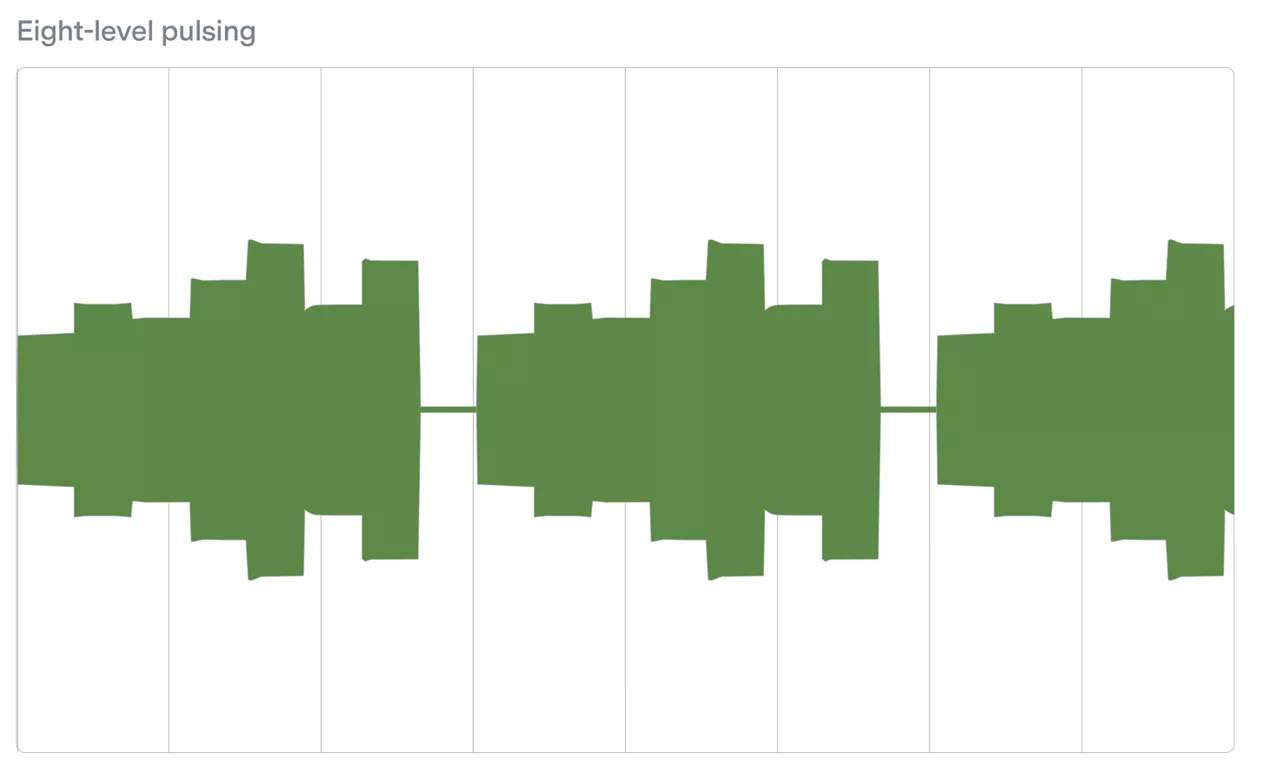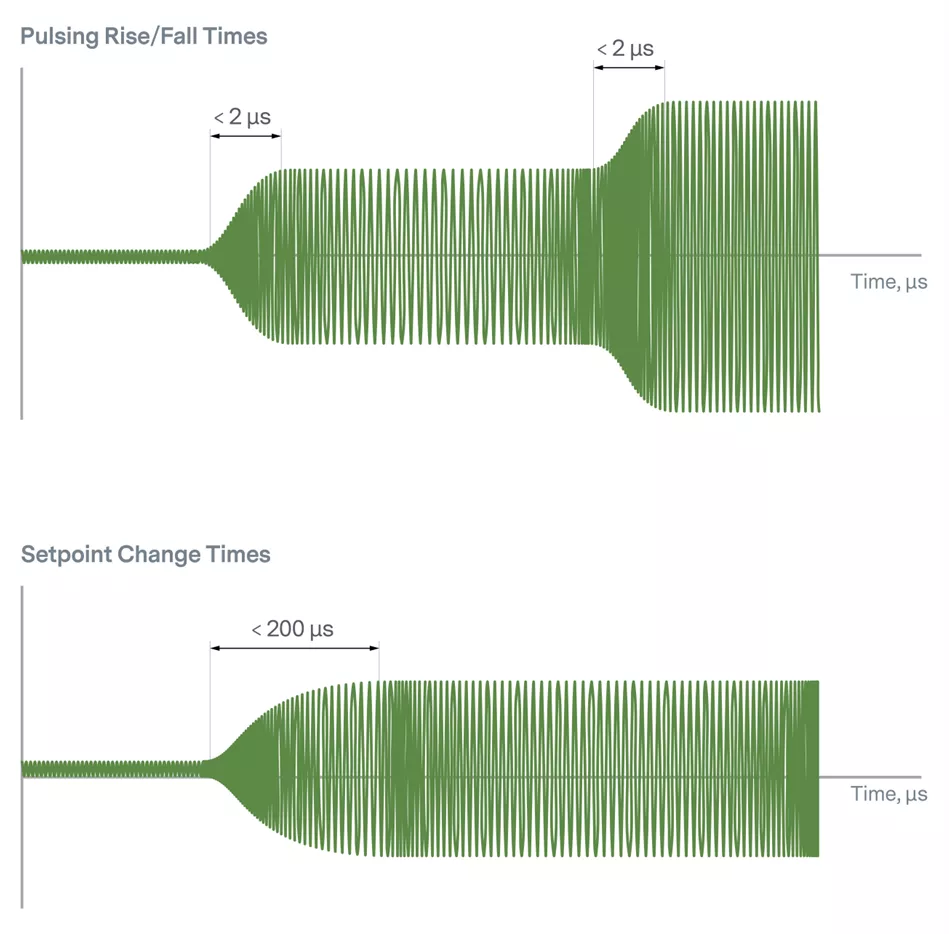
Addressing the need for Angstrom Era precision and control
As chip designs push the limits of speed, size and complexity, the semiconductor industry has set its sights on angstrom-scale device features. High-speed, precise and repeatable plasma power delivery with sophisticated controls is fundamental to process and device improvements. These factors support inflection points in technologies from chip-scale packaging through advanced front-end technologies, including gate-all-around (GAA) transistors, backside power delivery (BPD) and the path to 3D DRAM.
Visionary process development requires an ultrafast power-delivery response to the extreme swings in impedance that result from abrupt shifts in gas flow, chemistry and pressure inside the plasma chamber. In addition, sophisticated controls provide tools for advanced process design. To support the drive forward to new manufacturing innovations, next-generation power delivery technology must widen the ability to innovate ever more complex processes.

Approaching the Angstrom Era
Over the past 40+ years, plasma power delivery has rapidly evolved in parallel with semiconductor devices as they have moved from chip-scale packages through system-in-package and on into 3D ICs (Figure 1).

Figure 1. Evolution of RF plasma power delivery technology has evolved in line with semiconductor developments.
The earliest form of RF power delivery was based on linear power technology and consisted of a DC and RF section. The next generation utilized switched-mode technology and was more efficient, simpler, more reliable and less expensive. Smaller magnetic components enabled a substantially smaller form factor of the switched-mode RF power supply compared to older generation RF power systems, allowing system designers to integrate them directly onto the chamber for the first time.
Next, to address the need for wider impedance ranges and multiple match positions, came selectable fixed impedance matching systems using pin diodes and technologies that allowed direct matching of multiple impedances. As the technology progressed, elimination of the DC-DC inverter stage further simplified the design, enhanced performance and gave operators the ability to install systems close to the load.
A New Generation of RF Technology
Now, as the semiconductor industry speeds toward a new inflection, a new generation of RF technology has recently emerged to empower process innovation for sub-2 nm device architectures, enabling:
- Access to new energy regimes and distributions
- Increased process space and widened stability window
- High-speed response and increased RF stability
- Sophisticated data collection, visualization and analysis
The following introduces some of the features and capabilities that RF generator platforms can now offer to empower process designers and operators into a new era of semiconductor manufacturing.
Dynamically Controllable Multi-Level Pulsing
Increasing the number of steps and transition speeds within a recipe without increasing overall processing time facilitates the ability to push the envelope of 3D architecture complexity.

Figure 2. Providing speed and control within programmable pulse profiles
Next-generation processes for sub-2 nm profiles require shorter process steps with faster transitions. The most advanced RF power delivery technology provides instantaneous adjustments in RF power and frequency within pulses to achieve desired plasma characteristics across step-to-step process chemistry changes. Previously, step transition speed was often limited by power supply response time. However, with the latest technologies offering pulse-state rise/fall times of under 2 µs, process designers are free to create more sophisticated processes that accomplish more steps without unnecessarily increasing wafer processing time. In addition to supporting more complex processes, this capability offers increased uniformity and greater etch and deposition rates – essential to atomic-level/sub-2 nm semiconductor processing.

Figure 3. Fast setpoint change and pulse rise/fall times support more sophisticated processes.
User-Defined Transition Timing
Customizable rise and fall edges of power or frequency enable process stability during transitions into unstable process regions to increase process space. New RF generator technologies now support both high-speed transitions as described above and customizable power or frequency ramp-up or ramp-down between pulsing states.

Figure 4. Configurable power/frequency ramp helps mitigate transients and enhance process stability during transitions into unstable process regions.
dP/dZ Stability with High-Speed Output Response
Faster reaction to conditions in the process environment is critical for the frequent, extreme transitions of leading-edge process recipes. Some new RF power delivery systems feature unique proprietary control algorithms that enable high-speed (under 200 µs) output response for both setpoint changes and pulsing and constant power delivery through impedance transitions while mitigating dP/dZ instability that might be present in the system.
Programmable Overshoot
Intelligent selection of overshoot amplitude and duration for specific process conditions increases process recipe space and options in process design. The initial voltage required to ignite a plasma depends on many factors, including chamber geometry, gas chemistry, pressure, temperature and other conditions. To reliably and repeatably achieve plasma ignition, RF power delivery systems must deliver a highly precise voltage spike tailored to these parameters. Likewise, during long low-power and no-power states, the plasma can extinguish or become unstable without a high degree of speed and responsiveness tailored to process conditions.
High-speed, High-accuracy Model-based Frequency Tuning with Wide Frequency Sweep Range
At 1 µs, new generator technologies can offer tuning step times that are about an order of magnitude faster than older technologies. This is key for fast-pulsing recipes where variable vac capacitors aren’t fast enough to tune state-to-state.
Reliable Ignition and RF Stability Independent of Cable Length
Previous RF technologies utilized either an unbalanced or conventional balanced amplifier design. Unbalanced designs heavily rely on cable length to maintain RF stability, while conventional balanced designs are cable-length independent but provide no customizable overshoot for reliable ignition and stability. Now, however, RF stability algorithms and balanced designs not only free the generator from cable length requirements but also provide user-settable overshoot after step or state changes.

Ultrafast EtherCat Communication
EtherCat® is the standard protocol for today’s semiconductor manufacturing systems to enable ultrafast communication and new generators with EtherCat connectivity can be operated at a millisecond framerate and low latency.
Actionable Intelligence
High-resolution, high-bandwidth data acquisition and analysis platforms enable data-driven decision-making and help increase uptime. Empowering operators to optimize performance with IoT-enabled intelligence, these platforms can capture performance data from plasma power delivery systems — including configurable onboard oscilloscope data in nanoseconds for critical events. The result is faster troubleshooting, enhanced unit health monitoring and in-depth correlation analysis.
The Brave New World of Semiconductor Manufacturing
The industry is not just approaching angstrom-scale architectures; it’s nearing a new era in chip manufacturing. As power-delivery performance requirements intensify, newly introduced RF plasma power innovation helps set the scene for future technology nodes.
The Angstrom Era will deliver another inflection point for the industry with the promise of even more powerful semiconductor devices. As process complexity grows, so do requirements for unprecedented precision, repeatability and control. Ongoing developments in the field of RF generators and associated hardware and software will play a pivotal role in the success of next-generation processes.
About the Author
Vitaly Petrishchev holds a Ph.D. in Aerospace, Aeronautical and Astronautical Engineering from The Ohio State University. He has co-authored 14 technical papers in the fields of plasma physics, thermodynamics, optics and related areas.